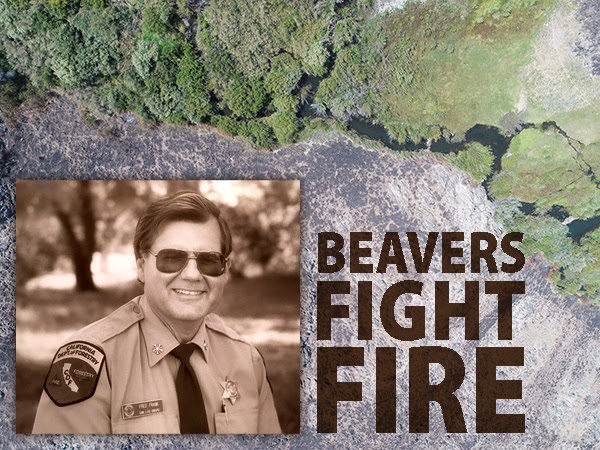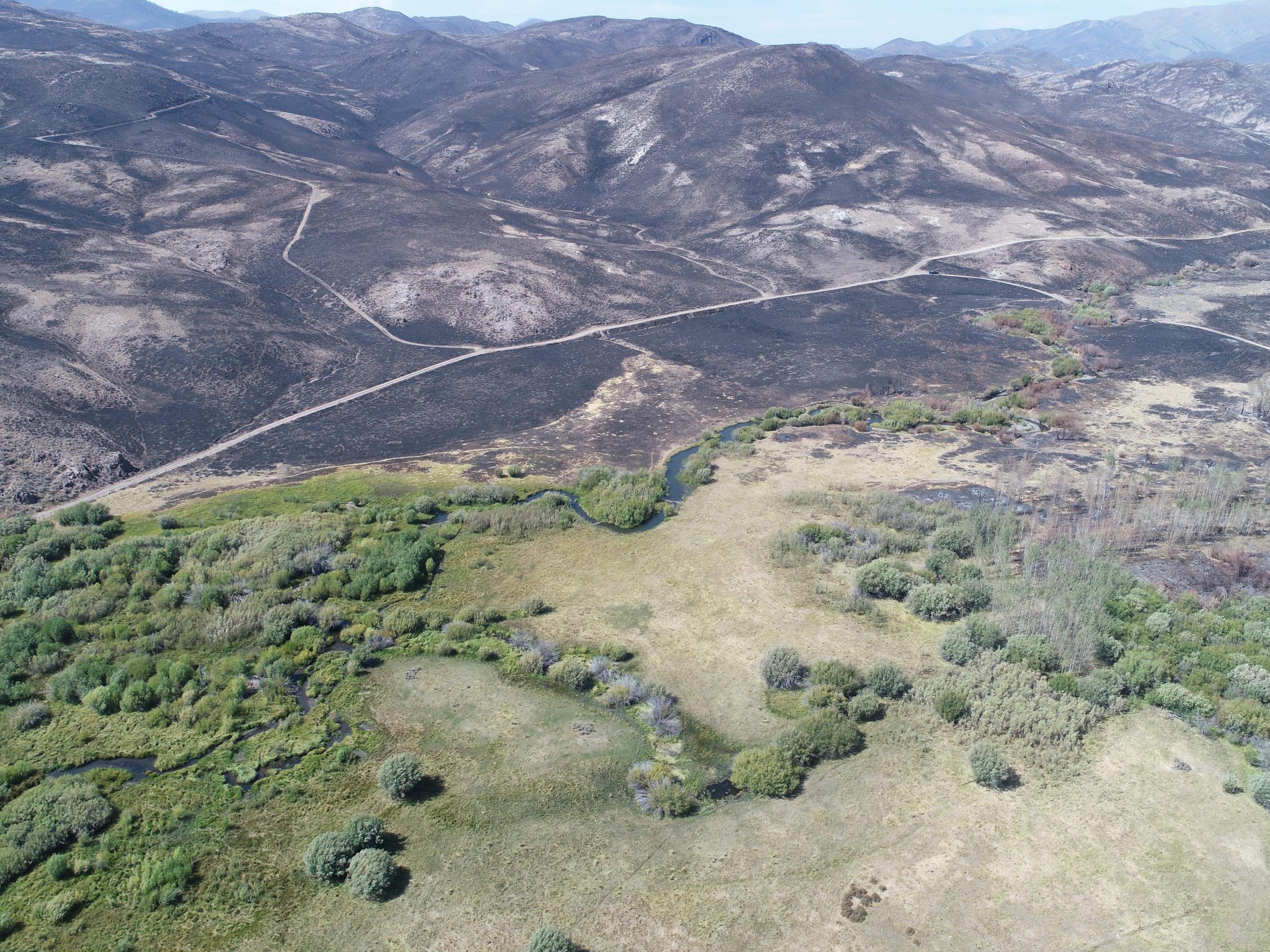
Former San Luis Obispo Cal Fire and County Fire Chief,
and Fire Captain at the Cal Fire Paso station
| California is experiencing another year of devastating wildfires. In the midst of all the flames, however, islands of green are common. They are meadows and streams occupied by beavers. Our long-term drought has led to millions of acres of dead and dying trees and brush resulting in extremely hazardous burning conditions. Beaver dams mitigate fire hazard by creating natural fire breaks. This year, wildfires are being driven by extraordinarily dry fuel conditions early in the season. These fuels are made up of both dead and living materials. Normally the living fuels would slow fire spread at this time of year, but now there is less living fuel and it is much drier than normal. Live trees and brush often contain up to 200% of their dry weight in water. This represents a huge heat sink that must be driven off before it will burn. Today, living fuels may contain less than 50% water. The combination of more dead fuels and dry living fuels has led to unprecedented fire hazard. It is well known that meadows impacted by beaver dams are often unburned islands within otherwise intensely burned lands. These meadows consist of a green understory of grasses, reeds and willows of a high moisture content that will not burn under the most extreme weather conditions. Beaver dams also create wet soil conditions that extend far beyond the ponds and result in high moisture content in living trees and other woody plants, thus reducing fire spread. Not only are beaver meadows fire-proof, but beaver dammed streams function as barriers that can stop moderate fire spread and can be used by firefighters as fire lines along the flanks of intensely burning fires. Further, beaver dams impede water flow and provide more infiltration of water into the surrounding aquifer. This raises the water table so that it is within the root zone of trees and other plants. This in turn raises the moisture of the trees and associated vegetation far from the riparian zone, thus greatly reducing vulnerability to fire. Not only do beavers reduce fire risk, they do it all for free. Probably the most difficult part of this equation is the expansion of development into vulnerable fire-prone wild lands. This factor increases the number of fires that occur in these areas and greatly increases the demands on fire responders. Often most, if not all, of the fire suppression efforts are initially directed to saving lives and property rather than suppressing the fire.  Burn photo by Dr. Joe Wheaton at Utah State. Click here to see many more photos like this. Burn photo by Dr. Joe Wheaton at Utah State. Click here to see many more photos like this.For many years, Fred Frank has provided technical advice on watershed and fuel management in Cal Fire’s SLO coastal region. His suggestions: Remove dead and dying trees and brush along the river banks. This would assist firefighters by reducing potential for spread and providing better access. Target highly flammable invasive species for removal. Arundo reeds and phragmites are ready fuels for fires Remove very little vegetation within the riverbed. Vegetation within the river channel helps reduce the velocity of the flow, therefore reducing erosion potential. Minimize heavy equipment use. Disturbance of riverbanks leads to serious stream bank erosion. Consult with a stream hydrologist. Expert evaluation and advice can be helpful and may be necessary. There are several reasons we have experienced such disastrous fires recently: We are in a long term drought that has led to millions of acres of high fuel loading. Yet we had enough rain to grow plenty of grass that rapidly spreads fire to heavy fuels that are difficult to control. |